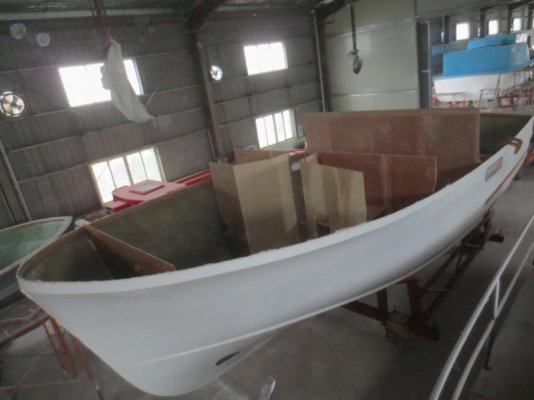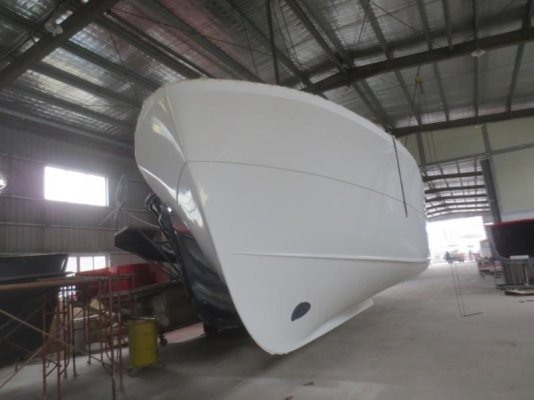BB - Got Picts? What two (larger than 10' RIB's) were/are your and Girl-B's favorites??
No pics...no favorites. We love the RIB's too. Love fast. But then we like long range cruising. Our favorite is the one we're on today. I will disclose the one that fits more closely to this site although still rather a poor match.
We struggled and struggled deciding on a loop boat. A lot of things influenced that. We were close to a Hatteras 60 but it never turned us on, plus the lower helm was an issue with them. We considered a Sea Ray L Series but then became aware of the problems even those who love them have. We came close to a custom build, a new version of the old Pacific Mariner 65. We were strongly considering Grand Banks but then all the turmoil of the company led us away. The boat we would have selected is no longer offered.
We initially said 50', then said 60' was the absolute maximum but then over time we travel with more people.
We considered everything from KK (too slow) to Fleming (too slow although faster than KK) to Coastal Craft (too aluminum) to Beneteau to Princess. If our Riva had a flybridge it would have been perfect and still was tempting but not for the Loop and all the Inland Rivers.
We heard all the statements about what is too large, docking issues, everything so we checked marinas over every piece of the loop to see how much was old wive's tales and how much was a real issue. We talked to people who have looped with everything from 30' to a 72' Hatteras. We found that there are many marinas that can't handle larger but there is virtually no area, no hundred mile run, where there isn't a marina that can.
Some aspects that we did define along the way. Must cruise at a minimum of 20 knots, must have a flybridge, must have galley up. Must have at least 3 staterooms. Must have two helms. Must carry a decent sized RIB. Must be a company we trust. Many other things.
Now, we looked briefly at Sunseeker. Manhattan is their flybridge moniker. A Manhattan 63 had a lot of good attributes but galley down so no. They like Riva just didn't have anything that worked...until
Sunseeker introduced the Manhattan 65. Exact same boat as the 63 except galley up. Yes, I know, crazy that a 63 and 65 are identical hulls. Still had some issues that we'll have to get corrected, primarily that the arch won't clear with all the electronics so have to hinge it. Also, not our favorite electronic options. I hate buying and immediately making changes but necessary in this case. So, that's the one on the way.
This boat will start the loop and get to the TN River. Then stop for a year or two to cruise the TN, the Cumberland, the Ohio and the Missouri. Then home and start it again. Maybe every 4 or 5 years. Hitting the places missed the first time or more time in the same places. More time on each of the great lakes. Always starting in NY as early May as things are open and safe. Always south from Chicago just in time in September. Very little time on the East coast or Gulf as we cruise them regularly. It will spend more winters docked on the TN rather than in South Florida.
We love all types of boating. We lived until 2012 on Lake Norman in NC and had runabouts. Our last boat there was a 30' Cobalt bowrider. It did have 50+ knot speed. Seems silly on a lake that size but we liked it. We didn't regularly run that fast. We like small towns and large cities when cruising. New places. We only like to travel by boat. We love Apalachicola and New York City. We like Atlantis in Nassau and we like the Exumas. We loved Alaska and we loved Bocas del Toro, Panama. You better have a boat there as it's so far away from the rest of civilization.
Oh and Girl B said her favorite was a Cigarette. But then it would be just for an hour or two. Even she admits 135 mph in a 50' boat is a bit too much for her. We just happened to see a show on their history and boats on television the other night.
The one we get out in when it's just the two of us is her "Baby Riva" as she calls it. 44' open boat. WOT 40 knots, cruise 35 knots. Great for running to Miami for lunch or the day or to West Palm. It's never been out of Florida.


